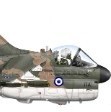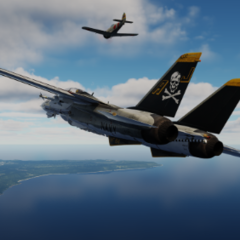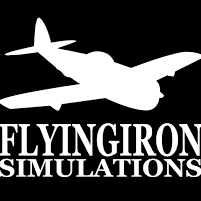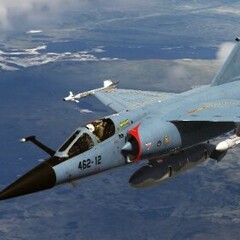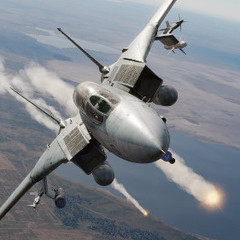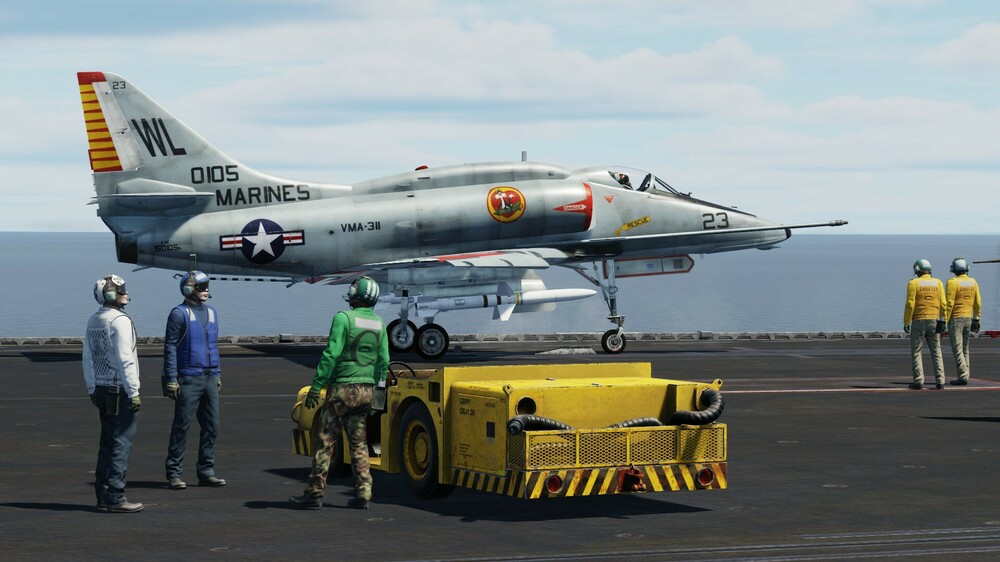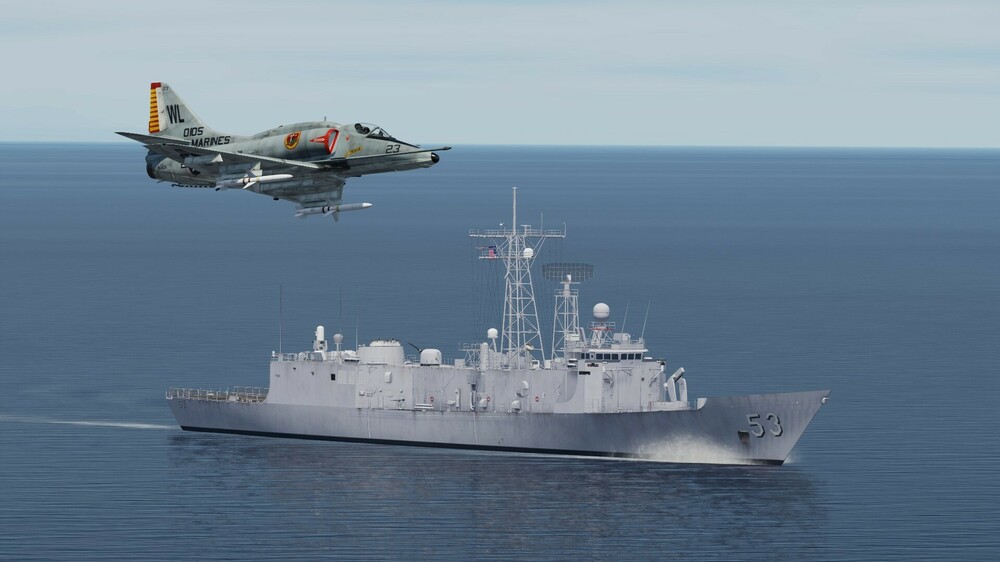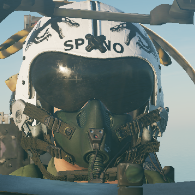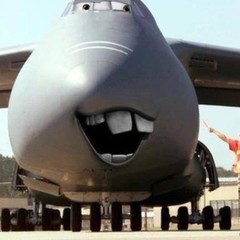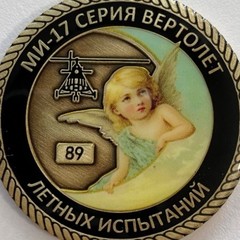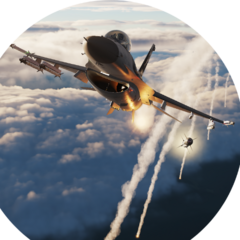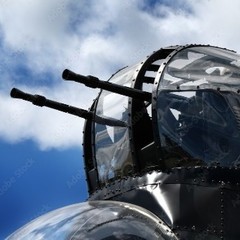Leaderboard
Popular Content
Showing content with the highest reputation on 11/08/23 in all areas
-
13 points
-
A-7E Corsair II development updates https://flyingironsimulations.com/blogs/news/dcs-a-7e-development-update12 points
-
G'day guys! We know that you've been itching to find out more, so this report will be purely focused on the development state of the A-7E Corsair II for DCS World. The SLUF has an all new, much improved 3D model and today we're happy to be sharing the first pictures of the new model in-sim! First, I must apologize for the lengthy gap between development updates. We understand that many of you are keen for more regular update reports, and I will strive to do my best going forward to try and keep the development news flowing through more regularly. Without further ado, let's dive into what we've been up to in 2023! ARTWORK 2023 has been a wild ride for our beloved Corsair; with some difficult decisions being made throughout the year. In our previous report, we unveiled our overhauled and remade 3D model in all of its beauty. The model was exquisitely detailed, and we were very proud of it (and still are) - especially considering the model was built from only photos and blueprints. In 2023, we recruited a new artist, Oleg, who is a veteran of the industry & aircraft modelling, having worked previously with some of the very best teams in Flight Simulation. Not only an incredible 3D artist, Oleg has extensive experience with photogrammetry; the fascinating process of extracting a 3D model from a real-world object via a detailed photography process. This presented us with a unique opportunity to do something we've never done before - scan an entire aircraft as the basis of our model. After being presented with this opportunity, we made the very difficult decision to remake the 3D model AGAIN. Now I know what you're thinking, and don't worry - this decision hasn't had any effect on our release projections; there is still plenty of more programming work to be done in tandem. Of course, this decision was very painful for us, having to set aside thousands of hours of work is not a decision to be made lightly. Ultimately though, we believe that this was the best decision going forward for the team, for the module and for the consumer. Our previous model was excellent, however any model built from blueprints & photos is prone to inaccuracies, as minor as they may be. This is just the nature of dealing with wild blueprint inaccuracies, incomplete photo reference and managing strange photo perspectives and alignment. Photogrammetry eliminates these errors and inaccuracies, providing a true-to-life 3D reference of the model and textures. The external model has progressed at an incredible pace thanks to the photogrammetry, and soon work will begin on the cockpit remodel. Now that the new model has been in development for some time, we are absolutely confident that we made the right decision, and we think that these screenshots might just convince you too Note that the textures here are using the scan reprojection from an A-7P, and don't necessarily represent the final textures or level of wear & tear. PORTUGAL TRIP Earlier this year, Oleg & all of his gear packed up and made the journey to the Museu do Ar (Air Museum) in Portugal. The museum is home to 2 beautiful A-7P aircraft - one in Ovar, and one in Alverca (plus an additional cockpit display in Sintra). We were lucky enough to be granted full access to both aircraft; not only the exterior and cockpits, but also to internals such as the radar & avionics bays, landing gear compartments and intake! With perfect weather shining down on our scanning days, we were able to capture near perfect scans of both airframes - giving us not only 1, but 2 complete reference models. This took several days of laborious photography, crawling inside tiny compartments, setting up lighting rigs and capturing tens of thousands of photos from every angle imaginable. As you can see, the end result has been well worth the effort. We are immensely proud of the new artwork and the progress it's been making; Oleg is doing fantastic work and we truly believe it will be up there with some of the best in DCS World. Of course, we didn't stop there - you don't get an opportunity like this every day! We also used the opportunity to capture video footage inside the cockpit, providing detailed reference of switch, dial and lever motions to provide accurate reference for animation. The final step, using a professional microphone rig, was to capture all of the unique cockpit sounds that we possibly could. Although it would be very easy to use generic switch & lever sounds, we think using genuine sounds from the real cockpit just adds that extra level of immersion & authenticity. FLIGHT MODEL Moving into Phase 4 In the last few months, work has been mainly focused on further developing and refining the flight model, with the aim of getting it ready for testing and into phase 4 of development. It's been quite a lengthy process, requiring a redevelopment of the equations driving the flight model, in order to be able to better integrate the CFD data we have been capturing. We also came across a new source of wind-tunnel data this year, providing more direct data to be used in our tables as well as providing very useful validation data for our CFD model. Without getting too technical, we have significantly expanded upon our stability & control derivative modelling, replacing previously linear derivatives with complete non-linear data tables, often with 3 or 4 dependencies and inputs. Again, this goes above & beyond the derivatives provided from wind-tunnel testing and provides a more in-depth and accurate simulation of aircraft dynamics, particularly at & beyond the edge of performance envelope. This year also saw the expansion and development of the TF-41 engine simulation, with much the same process being applied here. Various data reports & engine simulation software were used to create a comprehensive picture of engine performance, with work ongoing to further develop simulations of various engine subsystems & quirks. The TF-41 is a relatively slow engine to respond, adding an even greater challenge to carrier landings and Air Refuelling operations. Finally, 2023 has seen the completion of the Automatic Flight Control System (AFCS), which includes a complete Control Augmentation System (CAS) as well as multiple autopilot operating modes. We've previously discussed the AFCS in detail and the importance it has on all areas of flight - we're now happy to report that it is finished and awaiting testing! Optimization & Efficiency An EFM in DCS World is typically simulated every 0.005 seconds - meaning that the flight model is updated & recalculated 200 times every second. This is necessary to allow for the accurate computation of aerodynamic models and also for accurate reading of pilot inputs, providing an appropriate level of sensitivity and resolution. Given that an aerodynamic model consists of huge amounts of data (often thousands of data points split into as many as 100+ tables) and heavy calculations, any inefficiencies in the EFM model can lead to a degradation in performance at all times in flight. For this reason, we have been spending time optimizing and improving runtime efficiency in our flight model to try and ensure we have the best possible performance. The focus here was to redevelop our Look-up Table (LUT) model from the ground up, using the latest available research to help direct our efforts. Without getting too far into the nitty gritty details, we have been able to significantly improve the processing time of a simulation loop by increasing the speed & efficiency of our look-up tables. Typically in a LUT, data is stored in tables, which usually have up to 20-30 rows and often the same amount of columns. The computer will take an input, such as AoA, and loop through the table until it finds the nearest matching values. From there we can do mathematical interpolation to determine the correct value that matches our input. This is repeated for each table (can be 100+ tables), and the whole process repeated 200 times per second. While this is an acceptable process in most cases, there is certainly room for improvement. One such approach is to store the previous result, and then use that as a starting to place for the next search loop through the data table. This helps, but still requires a full search loop whenever a large change in input occurs. Our new LUT model however does not require any searching or loops; instead, we have developed a clever method that involves manipulating our data sets so as to maintain a linear relationship between inputs & corresponding data tables, so that the table index (or where to look in the table) can be simply computed from the table input value. We have of course expanded the model to include n-dimension tables, so that it is ready to handle any fresh CFD data we can throw at it! It was important for us to get this right, not only for the performance reasons above but also because the LUT model is a cornerstone of the EFM, and can be reused in any future modules. CFD WORK You'd be forgiven that we would be finished with CFD work on the A7 by now, but not quite! Previously, our CFD model was built in NASA's OpenVSP software, meant to only be a crude representation of the A7 with a very simple, performance based mesh. This has given us acceptable results over the last year, most of which has been implemented into the Flight Model already. However, having captured the scans on a real A7, the opportunity to collect fresh & more accurate CFD data was suddenly available. So this year, using the scan as a base, we have been busy also rebuilding our CFD mesh; this time using a much more detailed and accurate mesh. Given that CFD is entirely mesh dependant, an upgrade to mesh fidelity consequently provides an increased data resolution and accuracy. This was particularly beneficial for capturing peripheral data that is not present in the literature, such as landing gear forces, speedbrake forces and so on. Our previous mesh was very simplistic, and thus only captured a general idea of the forces. Now however, we are building our CFD mesh from Oleg's incredible scanning and modelling work, providing 1:1 accuracy with the mesh and consequently the data collected. It has been a difficult & intensive process, as anyone that has worked in CFD can undoubtedly attest to. Fortunately, we have been working closely with Research in Flight once again to further refine our new model and ensure validity of our collected data. It is a large undertaking and fairly heavy workload, however we are grateful to have the opportunity to work with the experts to really develop our CFD knowledge & skills; not only is it a huge benefit to the A7, but it also opens the door for us to be able to model any future aircraft with full EFM fidelity. Here you can see just a very, very small sample of some of data collected from a test run of the landing gear model. MECHANICAL SYSTEMS The Corsair has a beautiful duality as an aircraft; it was a technological pioneer of the time, featuring the first fully-fledged Heads-Up Display unit that we are so familiar with in modern aircraft. Yet, it was also very much an 'analogue' jet of the past, lacking the huge array of sensors and digital control systems that modern fighters are equipped with. The Corsair is a very much a hybrid of the two; a transition between two eras in military aviation. With this in mind, we've been spending some more time this year really expanding upon our simulations of the aircrafts mechanical systems such as gear & ground operations, carrier ops & systems, hydraulic & fuel systems. While these aren't as flashy as the weapons & avionics systems, these elements make up a considerable portion of the airframe, procedures and overall simulation experience, and its important that we get them right. As a simple example, the speedbrake is hydraulically operated, but not immune to the intense forces of high-speed flight. It will be buffeted and pushed back, partially retracted by a strong enough airflow. It is prone to drooping & partially opening should PC2 hydraulic pressure fail. It cannot be operated with gear extended, unless using a manual PC2 hand pump when on the ground. We have done our very best to capture all of these quirks & details, really developing the unique character of the Corsair II airframe. As we are modelling a later-era Corsair, the airframe includes Automatic Manoeuvring Flaps (AMF), an advanced flap control system designed to increase turn performance and manoeuvrability in lower speed conditions. The system operates by partially extending the trailing & leading edge flaps when angle of attack exceeds 14.75 units at an airspeed below 0.7 mach, retracting again below 10.5 units AoA or above 0.7 mach. The AMF system has been completed & integrated fully in 2023! CARRIER & GROUND OPS We are happy to report that the Corsair is now operational off the carrier deck, having made her maiden launch & trap several weeks back. Landing a Corsair on the ship is immensely difficult, and success will not come easily. We have to commend the incredible skill & courage of real-world Corsair pilots; to be able to regularly achieve such a feat is nothing short of extraordinary. We have completed work on the launch bar system and its various safety measures & dependencies, as well as the arresting hook system, nosewheel steering, braking systems, landing gear systems and much more. To give you an example of the work that's been happening, lets discuss the Nose Gear Steering system as an example. The Nose Gear Steering (NGS) system is the power steering of the Corsair; it is electrically controlled & hydraulically actuated via a hydraulic cylinder mounted on the nose gear shock strut. When the system is deenergized, it provides an automatic nose gear shimmy damping function - essentially damping nose-wheel wobble and providing a smoother taxi. Engaging the system via the Nose Gear Steering button on the grip allows the pilot to steer via the rudders up to 60° off-centre. Hydraulic power is provided via the PC2 system and requires the utilities isolation valve to be OPEN - it will not function if the valve is closed. Automatic recentring of the nose gear occurs during gear retraction, or when the right gear weight on wheel sensor determines there is no weight on the gear. When this happens, a servo valve repositions to block PC2 hydraulic pressure. A spring-loaded damper shutoff valve then moves into position, connecting the left & right sides of the nose gear steering system to a damping orifice, restoring the automatic shimmy damping functionality. We are quite pleased that we've been able to capture & simulate this functionality; it will be important to follow procedures correctly when flying the Corsair. As you can see, the technology used is slightly older than what you might be used to, and has some more limitations than modern aircraft. There is alot to remember, even with something simple such as the Nose Gear Steering. You'll need to make sure your utilities valve is open, flap settings are correct, hydraulic pressure is okay and even then you'll always need to be on your toes to ensure you don't exceed that 60° limitation or you may be in for a rapid departure off the deck! In a similar vein, we have completed work on the braking system - featuring simulation of antiskid behaviour, PC2 pressure dependency and an additional emergency wheel brake system. Landing Gear operation also requires correct management of the utilities isolation valve, and features a similarly detailed emergency release system. I won't go into as much detail on these systems, but each has been carefully crafted to match the detailed operation procedures and information available in the NATOPS & pilot manuals (as well as with pilot input of course!). There have been a few challenges along the way, such as overcoming DCSs rigid body physics in-order to create a realistic simulation of hydraulic compression, something that is seen during a carrier landing when the arresting hook is compressed. Most likely you might never notice these types of details when you fly the Corsair, and thats good however extensive work has gone into their development in order to provide a natural, realistic experience. Most of these core systems are in various stages of completion now, with work on-going on the suspension model & fuel systems. SENSORS & AVIONICS Much time has been spent this year on improving the realism of the flow of information that occurs through the A7's suite of computers and sensors. Every display, every computer, every calculation throughout the avionics suite relies on data that is collected via specific sensors in the aircraft. These sensors pass data through to the AN/ASN-91(V) Tactical Computer, the central brain & processor of the avionics suite. The computer can then run calculations as needed, and feed data to various displays and systems. As you might imagine, any disruptions in this chain of information can have severe consequences on the quality and availability of data available to the pilot. Fortunately, the NATOPS manual goes into great detail regarding this flow of information & we are also lucky to have access to a paper that extensively details the inner workings of the software used in the avionics suite. You can see an example below, just one page of many demonstrating the flow of information through the aircraft. To this end, we have been working on detailing our aircraft sensors - the first part of the information chain. We have created an accurate simulation of the Corsairs unique Angle of Attack system, which used non-standard AoA 'units' instead of degrees and is a key data element for a number of display & guidance systems. Work is ongoing to correctly model damage to any sensors, and the consequential disruptions this has on the avionics suite. We are quite pleased with the progress we've made on this front through 2023, having completed the Air Data Computer, begun work on the IMS and have completed integrating most of our systems correctly within the chain of information. Work has now also begun in earnest on the Tactical Computer, one of the most sophisticated parts of the aircraft (and consequently most complex to develop). The Corsair does not have any modern MFD's; consequently any inputs the pilot needs to make, settings that need to be changed, data that needs to be read - it all happens via the Tactical Computer and its numerical inputs. The functionality of the Tactical Computer is enormous and beyond the scope of this report; however I have included some of the input codes below to give you a taste of how the computer is operated, and the extensive amount of information that can be accessed and edited as required. Whilst much of the basic functionality of the Tactical Computer has already been done, we expect we will be continually working on advanced features right up until release. WHEN WILL IT BE FINISHED?? Two weeks Just kidding, unfortunately we still don't have a solid estimate on when we will be finished with development. Officially, we are expecting to move into Phase 4 of development sometime early next year, with the aim to begin testing at some point during the year. We are only a small team, without the resources to really expedite development over a couple of years. What we do have in spades is passion for the aircraft, and a willingness to craft if to the absolute highest standards, as long as that may take. We do want to extend a sincere thank you to everyone reading this, everybody that stops into our discord to chat about the A7 and everybody leaving comments on our social media and blog posts. Truly, you guys have been so patient and supportive of our work, it fills us with pride to be a part of such an excellent community of aviation enthusiasts. Thank you! Thank you for reading & for your continued support. Cheers, Dan, Alex, Raimond, Oleg & Iakov. FlyingIron Simulations9 points
-
From FlyingIron Simulations, A-7 Corsair II develop Pics8 points
-
A7 Corsair движется к релизу, который может быть уже в 2024 г. Хорошая новость для фанов самолета, коим являюсь и я Из особенностей будет новый подход к ЕФМ с потенциально меньшей нагрузкой на комп. Будет реализован тактический компьютер и ракеты AGM-45 Shrike.7 points
-
Grinnelli Designs F-100D update: https://grinnellidesigns.com/progress/6 points
-
An option to turn it off is now working internally, and I hope it comes out in the next update. Making a system that can work as perfectly as possible on every possible combination of equipment is daunting, but we are working to do our best. Thanks.5 points
-
Fixed but I don't think it will make it to the November OB.4 points
-
4 points
-
Hi again I was able to replicate the issue with your track @funkster I have reported this internally. Thanks.4 points
-
I have finally resolved this I have managed to now produce an external view that doesn't have the HUD projected on it, and I have also been able to use that same view to have a scalable viewport that projects the HUD where you want it and at the size you want it. I had made it possible to run DCS Bios devices with the HUD View, where a known shortcoming would normally disable the device data output meaning some DCS Bios devices would not work with the HUD View. I detailed that here https://forum.dcs.world/topic/334998-hud-view-seems-to-disable-some-dcs-bios-devices-solved/ In addition, by adding this into the monitor setup .lua file HUD = { x = 400; y = -200; width = 400; height = 400; } I was able to make a user defined HUD viewport The issue I then had was that when I combined the two solutions above, while the HUD View now projects the HUD the way I want it, somehow it also knocked out the other devices meaning that the BCS Bios devices are non functioning again unless I allowed the original HUD to be displayed as well. Essentially I had everything working as long as I accepted that there is a small HUD being rendered in addition to the large one I want. The original HUD is called out in the HUD-init.lua file in this line indicator_type = indicator_types.COLLIMATOR purposes = {render_purpose.GENERAL,render_purpose.HUD_ONLY_VIEW} However I replaced it with this -- indicator_type = indicator_types.COLLIMATOR -- purposes = {render_purpose.GENERAL,render_purpose.HUD_ONLY_VIEW} effectively commenting out the lines. As a result, when in cockpit view I get the original HUD being rendered plus the large HUD created by the viewport, but switching to HUD_View only leaves the Viewport version, so now, finally I have a fully functional HUD View with an editable HUD projection that can me moved and scaled to suit your purposes. There is limited movement that you can perform with arrow keys to rotate or r-alt+r-shift+(arrow key) to slide to adjust the view but the HUD will stay fixed in the position you set in the monitor setup .lua file So for anyone wanting a user defined HUD View, we finally can have it Les4 points
-
@seb37 Scorch71 figured out the S-3 lua and posted a VS-28 skin on the user files section. Glad we have people in this community who are able to figure this stuff out. Finally able to paint the S-3 properly! Scorch71's livery: https://www.digitalcombatsimulator.com/en/files/3334224/4 points
-
Tactical reconnaissance is another role we need to add to DCS. Picture a dynamic campaign needing to dispatch reconnaissance aircraft like RF-4s, RF-101s, RA-5s, etc to track down Scuds.4 points
-
I thought so too, back in time, in a different sim. But one day the campaign told me I had to do a Recce flight. It didn't go well. About a day later, I had to do another photo recon flight, I wasn't liking the assignment, but I was bound and determined to push through the campaign to the end, and doing so meant doing the recon flights. I picked an A-4 Skyhawk... quick, but NOT fast. I put more than an hour figuring out loadouts, strategy, map waypoints, figuring out my actions for this, for that, for the flight. Upon realilsing I'm being intercepted, do I climb, or do I descend to gain speed? Do I ignore the interceptor and just hope to maintain enough speed to keep them from getting too close? Drop tanks? cannon shells full load, or empty to rely on raw speed for defence? Do I ditch the Skyhawk for something with afterburners and supersonic ability? Or do I use the light Skyhawk with a tight fuel load, and hope that firewalled dry thrust might be enough? Do I turn aggressively away if intercepted, or carry out the mission while minimising AOA to preserve enough speed to keep enemy from getting too close? I opted for the lightest Skyhawk I could manage, just enough fuel to do the mission. No armaments, I didn't want any temptation to try shooting down an enemy jet... that would let another get close for shots, and me by myself is not good for 3 on 1 engagement. Gentle turns, as much airspeed as I could wring out of the airframe. Dry throttle to the max. Clean airframe, no pylons to slow me down. Mostly level flight. Not on the deck, but not too high either. I wanted to be able to dive for the deck if an SA-2 came at me. Talk about intense... flying telephone poles launched in my general direction.... Migs trying to get at me. I thread the needle, gently but really tense. No wingmen to save me. I get the pics. Gentle turn to go home, not too hard a turn, gotta keep that airspeed pegged as high as possible. Oh crap, a Mig is gaining on my quickly.... a minute later I'm sprayed with giant green tracers.... I pitch up and roll, again gently to keep my speed, but enough to ruin his aim, throw the trace off.... another burst. misses... gentle manoeuvres, he's in full burner and I'm dead meat!! Wait, I haven't seen green tracers in a minute... look back... he's RTB !! Must have burned all the way to Bingo fuel and had to disengage! That flight caused me to go from thinking recon fliights were not-fun drudgery to some of the most fun I've ever had in a simulator! Became on of my favourite taskings! A later flight had me bring maybe 50 cannon shells, and I managed to get a target of opportunity, without sacrificing raw airspeed... aim was great, and it went down in flames. No he was not doing full ACM, just an unlucky rookie caught by surprise, and me with just enough shells to connect and do damage. Dodging SAM's in later missions.4 points
-
3 points
-
When I say “turn off the HUD” in the landing pattern, it’s because that is the only way that you are going to learn the skills you need to be a skilled (sim) aviator. It’s the same whether you’re flying a desktop sim, a full motion sim, or an actual aircraft. The Navy teaches “Attitude Instrument Flying” from day one. Tiny adjustments result in performance changes in jets due to both higher energy states and simple vector state geometry. One degree of pitch has a higher value at the end of a velocity vector has a larger vertical resultant. Reference the VDI, it’s got better fidelity. Eventually, you can turn that off too, and fly referencing the horizon for tactical flying. Each one G airspeed (or on speed AOA in the landing config) has a corresponding pitch attitude and power setting. For example, at max trap weight, level flight at 15 units AOA in landing config, takes about 10º nose high and 3300 pph fuel flow per engine (this is from memory, it changes slightly as we tweak the FM with each release). This also changes with weight and stores, but it’s relatively minor, a degree or two in pitch and a few hundred pph in fuel flow. It will get you in the ballpark. Same for turning flight, which requires a slight increase in pitch attitude and additional thrust. Practice turns, find out what pitch and power is required for those too. The goal is to be able to take your hand off of the stick without the aircraft pitch attitude changing. Trim will take constant attention, and should become natural and second nature. In the break, is similar, but dynamic since speeds and configuration is changing. Attitude is still the key, and angle of bank is used to control that attitude. As speed decreases, you’ll need more pitch and less bank. The HUD in the F14A/B was not designed to be used as a primary flight instrument. The horizon line, FPM and VSI jittered and lagged, depending upon the quality of alignment. Quality of alignment was usually worse at sea. It was common to have “runaway winds” with a SINS alignment at sea, caused by observables during the alignment. This resulted in the FPM being pegged and out of view. HUDs also overheated and failed, regularly. If you take the training wheels off, then you’ll learn to ride your bike. Note the pitch and power required for a desired speed and configuration. Write them down, be able to reproduce them. You’re life will get very, very easy.3 points
-
With respect to visual engagements, because of the weapons that the F-4E carried during the bulk of its service, you’re going to have to learn to maneuver to your opponents rear quarter. It’s going to be fun to watch, but the skills required will make you a better ACM driver. No more put the lift vector on, feet on the instrument panel, pull as hard as you can with both hands and pretend that you are ace of the base in your sporty F18. I can’t wait.3 points
-
Nice! Love to see that we've got a Flight I Arleigh Burke incoming! ED should put you on their payroll Admiral, your ships are amazing!3 points
-
Even as someone on the side of wanting more liveries, I don't mind having to click a download button if it's all in an easy to use system like the module manager. My preference would be what @Northstar98 suggested though. Either way, a manager for liveries benefits pretty much everyone.3 points
-
If there was a livery manager, that allowed you to select which liveries you have installed, that would be perfect. Even if it was just a blacklist in a configuration file to prevent them from being redownloaded every time an update or repair is run, would be perfectly sufficient. The aformentioned repair and updater utilities already have a way of determining which liveries are and are not installed, as well as those that have been modified, so as to redownload only those either not present or modified - so all the underlying functionality is already present in a fully working state - all that's needed is a way to control which livery files to exclude. Personally though, I think by default, it should install everything, as it does now, so that only those wishing to remove liveries would ever need to touch anything. For everybody else, they wouldn't need to do anything. And before somebody inevitably brings it up, storage space being plentiful and cheap doesn't justify why people should fill them up with files they don't necessarily need, want or use. For a fun game I suggest taking a shot everytime somebody brings that point up. I have plenty of storage space available - why does that mean I should fill it up with unnecessary files I don't need or want? And also before somebody brings it up, no, this request absolutely would not mean that livery development would need to stop or that livery development would be hindered - not in the slightest. That's non-sequitur nonsense and I've no idea where it came from. If the module manager as it currently exists doesn't prevent or hinder new module, terrain, or campaign development, then something like this wouldn't do the same for liveries either. The only other argument is that liveries might sometimes be something you want to have enforced, for instance, to prevent cheating - that's absolutely something I can agree with and in such a case, there's good news! Like the repair and updater utilities, there's another system designed specifically for this purpose - the integrity checker. I would be absolutely fine if liveries were something the integrity checker checks for, at the discretion of the server owner (for instance a checkbox for either enforce stock liveries or enforce host liveries).3 points
-
And they've said this is a prototype for the G.91, which was very much a photo recce platform.3 points
-
Hi all. Thank you for your patience. We were able to reproduce the crash and have reported it internally.3 points
-
Мне показалось, или эффективность радара стала выше? Сейчас в обычном RWS с 20-25 тысяч футов довольно уверенно обнаруживаются вертолеты, крадущиеся по земле. 120-ка уверенно завершает дело, даже нос опускать не нужно. Так и было? Пы. Сы. Недавно понаблюдал влияние центровки. Было повреждение заднего бака и при дозаправке он не заполнился. На посадке, думаю, дай-ка повыше скорость держать буду, а то «руля» вверх не хватит. И точно, «джойстик в пупок» пришлось тащить! Прикольно. Респект разработчикам!3 points
-
It's in my todo list (currently 186 items).3 points
-
3 points
-
I have been working at this for a while now, you can see I have finally managed to do it here Les2 points
-
Several kinds. Mi-8MTV-1, Mi-17-1V, Mi-172, Mi-17V-5, Mi-171. Some with the dolphin nose, some without...some with a ramp, some with clamshells.2 points
-
This is simply about the concept of choice and choice is one of the fundamental cornerstones of life.2 points
-
Oh yes and don't get me wrong - you can find images (although sometimes not many) of gas turbine ships producing smoke (usually whispy, cloud-like stuff)but presumably this depends on throttle setting, ambient conditions and as you described, when starting. Of course none of that is accounted for in DCS - I just wanted to point out that probably 99% of the time a decent amount of ships in DCS should either be producing 0 or only a very small amount of smoke (even for oil fired ships).2 points
-
Previously discussed topic:2 points
-
Currently, the base DCS install contains about 50GB of module liveries only. You don't need to own the corresponding modules, they are installed for everyone. This also potentially causes a high stress on VRAM in multiplayer, if a lot of users use different liveries. With the F-4 incoming, this will likely not improve in coming months. The disk size option is alone, I think, something that prevents selling a couple of modules, for lower budget users that have a full SSD and try keeping their DCS installation slim. Having 50GB of liveries should definitely be something optional. There should be fewer / lower resolution liveries in the base game. Then, either install additional or higher resolution liveries with aircraft modules, or with dedicated free texture pack modules.2 points
-
I absolutely love reading these incredible update reports! The A-7E is definitely a module that I'm incredibly excited about!2 points
-
Make sure you run MT. 1. Take the Instant Action: Su-27 bomber run 2. Switch to F10, it already has several waypoints 3. Click on the airplane you control (Su-27, white), (CA dialogs will appear on lower part 4. Click on Set Path 5. Enter 4 waypoints in opposite direction (they should be read target marks, but sometimes green appear as well). 6. Click Set Path again, the new route will be displayed (old one is removed) 7. Switch to F10 8. Start cycling NAV modes with '1', and keep hitting the key until it crashes If this does not work, and you are indeed using the same version as we do, then likely your machine is doing things faster/slower than mine or Null's. In concurrent programming, situations such as this are called "race conditions". Due to the concurrent nature, on one machine execution thread can complete faster than on another even with entirely identical environment. On some occasions this will cause a crash, on some it will not. In this case the C++ code is trying to de-reference pointer to invalid location, which is causing the process to get killed. Please ask another reliable person to try to replicate.2 points
-
2 points
-
Hey @SickSidewinder9 We are aware this is a nuisance to many players. We're trying hard to send an update as soon as possible, but this is a process and we're also handling other issues at the moment. Stay tuned, it will come soon.2 points
-
Слава Аллаху, Яхве, Будде, Гильгамешу, Конфуцию, Маниту, Мэдоксу, и всем иным Бог.м. Я понимаю, что перед Бо.ом время - мгновенье, но мы та люди, от времени зависим. Не бессмертные мы. Сколько уже идёт эта работа? Я присел на этот симулятор в 1996 году, когда вернулся из Германии (наше училище ХВВАУЛ, уже тогда закупило компьютерный класс, с установленным Су-27 Фланкер). И вот с этого времени и идёт работа над проблемой осколочного эффекта. Ой, хотелось бы дожить!2 points
-
2 points
-
2 points
-
ну можно увидеть сейчас, благо эмуляторов пруд пруди особо хочется отметить проект Altirra единственный эмулятор, который на 100% проходит стресс-тест для реального железа, Acid800, что говорит о высочайшем качестве эмуляции. скажем, широко популярный, в былые времена, Atari800Win Plus не проходит его и на половину.2 points
-
2 points
-
Как раз зашёл похвастаться) Сменил две вещи. Во-первых, установил 1.29.7. Во-вторых, запитал адаптер lan-usb не от зарядки телефона, а от usb-порта компьютера. В итоге - либо 1.29.7 работает стабильнее, либо адаптер греться перестал - но за два часа ни одного зависания.2 points
-
Don't care about more Airfields, just fix the ground Detail on all allready existing airfield according to real life maps. Right now they all look extremely outdated. Maybe shops and gas stations in cities would be nice too. So it can more be called Sinai map, right now it's more fictional Sinai map. Sure we'll never get a ground detail that accurate like MSFS but i got my hopes up.2 points
-
I think the RF-4B wasn't employed all that much on the boat. First, it came to the party later then the RF-4C and when it did, there still were lots of RA-5Cs und especially RF-8Gs around. I did look for some evidence of the nose folding over, but I couldn't find any. What's interesting, though, is that it had a lot of mods from the F-4J right from the start, or introduced over time: - slotted stabilator - uplocked inboard droops - J79-10 engines were introduced during it's service, while the USAF's RF-4Cs stuck to their short-nozzeled motors (though export RF-4Es had the -17 motor) - ECM antennas on the intakes, similar to the late Js The RFs are pretty awesome jets and I do hope that we at least get to see them as AI assets. Now, it would be even more aresome if we could get one as a module, but I guess people aren't ready for a full-time recce platform just yet2 points
-
2 points
-
2 points
-
Magnitude 3 - long awaited progress report is now available for viewing: https://magnitude-3.com/2023/11/04/2023-annual-update/ (+ more screenies)2 points
-
I'll add some pointers to get started. If you installed the previous "standalone beta 0.6.0", you should uninstall it from Add or remove programs first. Instead grab the latest Virtual Desktop from your app store (1.29.7.). ACTIVATING VDXR Make sure VDXR is selected as the OpenXR runtime in the Virtual Desktop settings. TROUBLESHOOTING If all is working well, you will see VXDR as the runtime in the Virtual: Desktop overlay: VDXR should be compatible with all my other OpenXR mods (such as OpenXR Toolkit and Quad View Foveated). If you are having issues, just do the usual: try Safe Mode, resetting settings, or disabling any mod. Log file for VDXR is created at %ProgramData%\Virtual Desktop (you can copy/paste that directly into File Explorer) and is called OpenXR.log. If you’re going to bring issues to me, you must include this file otherwise no support will be provided. Does it work with other apps? YES, see the list here: Application Compatibility · mbucchia/VirtualDesktop-OpenXR Wiki (github.com)2 points
-
Recently Browsing 0 members
- No registered users viewing this page.


